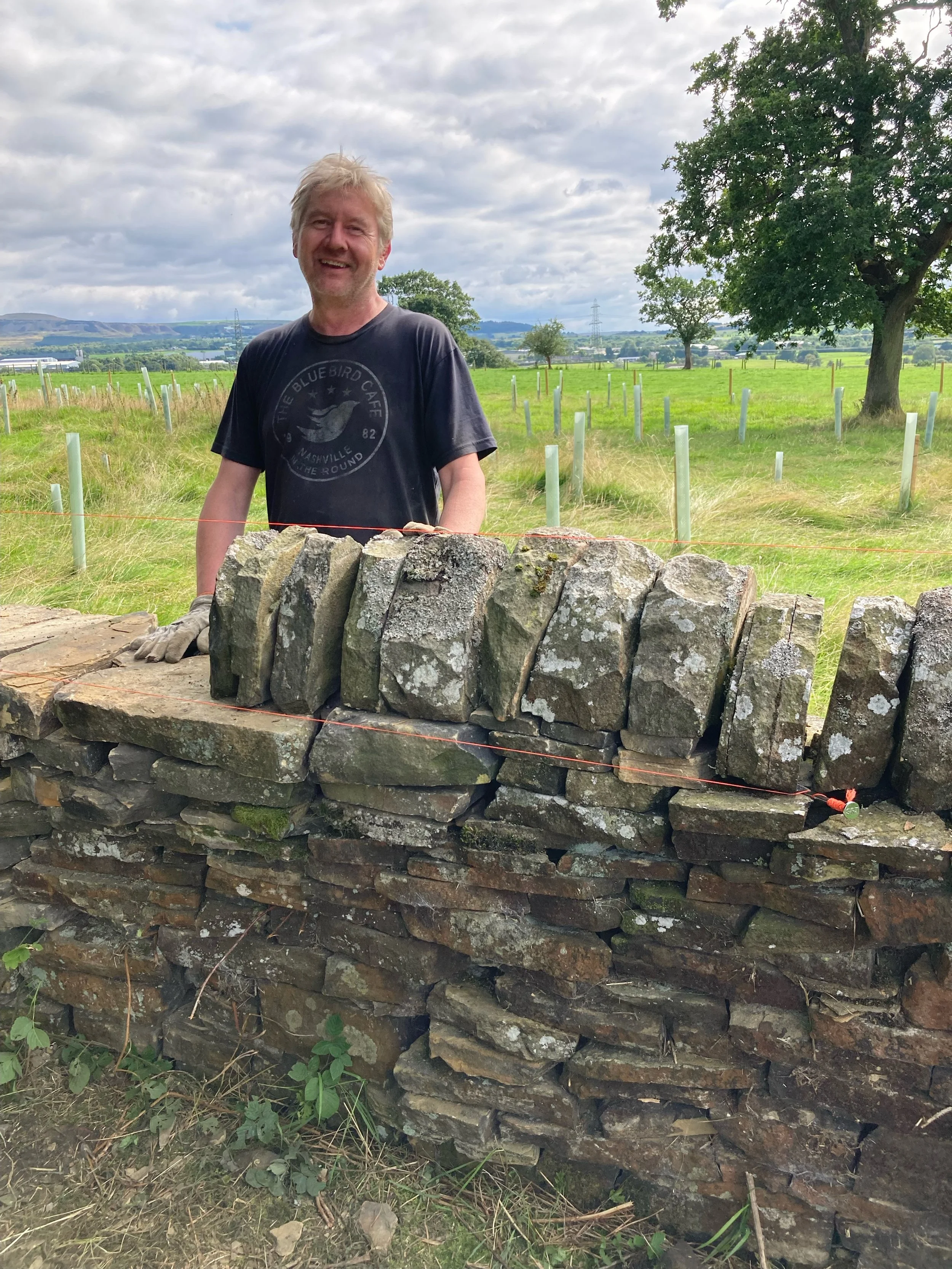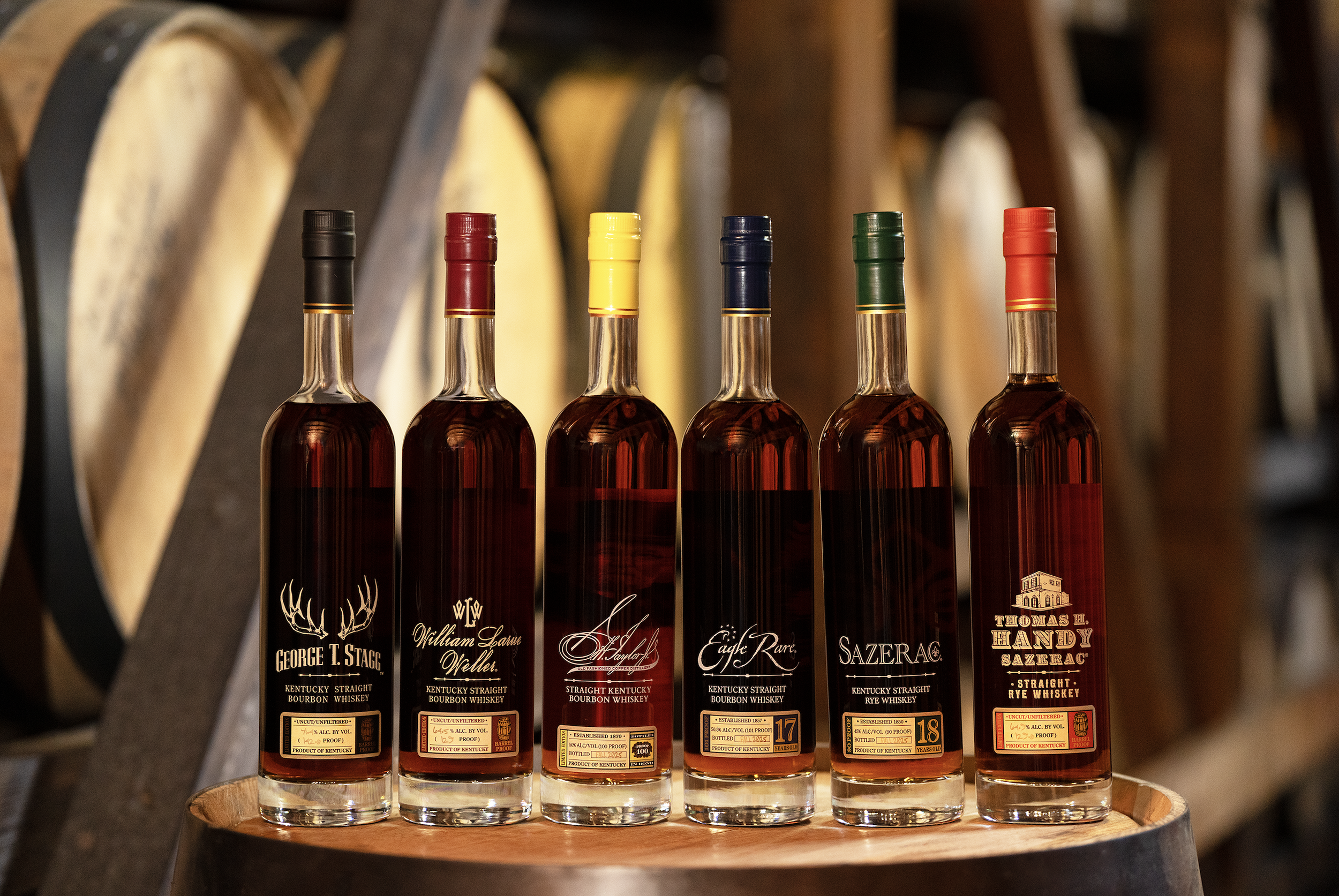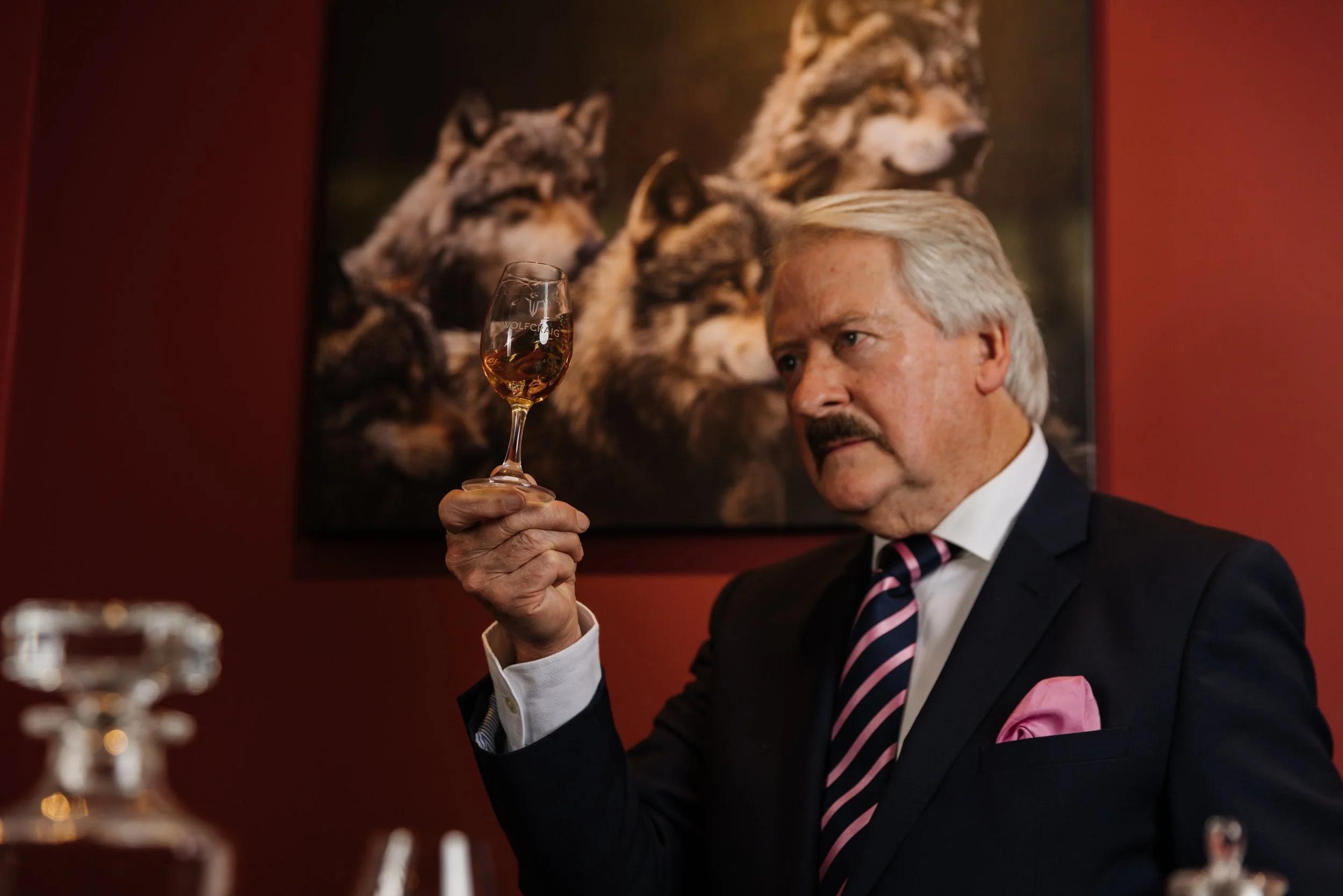Belfast – the full Irish
The distinctive yellow frame of a Harland and Wolff crane in the Belfast dock where the Titanic was built
Chris Moss discovers jumping jazz, boisterous bars and the first new distillery in almost 90 years on a titanic trip to Belfast
Non-locals passing the Friend at Hand on Hill Street, Belfast, probably think it’s a museum or a private club. It looks darkly Dickensian even in this Victorian city. The glow from the windows is warming amber with flecks of gold. The interior, peeked from the pavement, resembles a grotto. But in fact it’s just a shop. I say just. This Irish whiskey specialist stocks more than 600 labels, with a large part of its collection made up of ancient bottles of Dunvilles, Old Comber, Green Spot and Midleton. Locked inside glass cabinets, “Not for Sale” labels hang around their dusty necks.
Three expert salesmen talk me through their in-house bottlings and the emporium’s stock. They explain Cooley and Midleton in the Republic and Bushmills here in the north produce most of the raw material, and it’s left to the many individual makers to experiment, blend, age and bottle. I admire their extensive Bushmills range, but they advise that many of these are available elsewhere. I am dazzled by the plainest bottles; I’ve always fallen for scientific-looking as well as hand-scrawled labels; I must be a mad scientist with artistic aspirations. I have found my palate moving ever more towards uric yellow and/or medicinal drams in recent years.
The choice at Friend is dizzying; the oranges, ochres and hardwood furnishings merge to make me feel I’m actually inside a bottle of whiskey. In the end I plump for a WD O’Connell 10-Year-Old Single Grain, distilled in Cooley and matured in first-fill ex-bourbon casks for 10-12 years before being part-finished in ex-Rye casks. It’s sweeter and denser than my usual dram but it grows on me later. Irish whiskey is famous for its smoothness and mellowness. But this one is bold and rounded. Only 600 bottles exist – or existed. Most have gone, including mine, down my neck.
The Friend in Hand: Whiskey-lovers’ paradise
I leave the hectic, hedonistic Cathedral Quarter and head along the Lagan towards Titanic Belfast. I’m feeling sceptical about the idea of a museum dedicated to a sunken ship, especially after the film, the rich tourists’ subs, the tragic recent disaster, and the reiterations in the media. But the sepia displays, replica cabins, fine crockery and even the virtual “ride” through the dock are well executed, and the final tableau – a scale model of the ship slowly rotating over a sea-bed full of ghosts and fragments, with New York and Belfast on the wall, to an eerie synth-and-strings soundtrack – is affecting. But it’s a sunny and breezy day and I prefer to be out on the actual riverside. I leave the sunken vessel’s story for a bright view of white-horse capped waves.
‘Across the water I can see the Belfast mountains; few cities have such alluring landscapes in their suburbs’
The Lagan is a long, deep, fjord-like river and, under clears skies, is breathtakingly beautiful. Across the water I can see the Belfast mountains; few cities have such alluring landscapes in their suburbs. To the south, I can see the legendary yellow Harland and Wolff gantry cranes – named for those ill-fated meatheads, Samson and Goliath.
The views from the top of Cavehill across the city are superb
A little way along is the Thompson Graving Dock which would have been used to repair the Titanic if it had made it home. Inside the original redbrick pumphouse building is the first whiskey distillery to open in Belfast in almost 90 years. Titanic Distillers (a brand that was fog-horning to be registered) is the brainchild of former bus driver and millionaire lotto winner Peter Lavery, Stephen Symington and Richard Irwin, who have together invested around £8 million to develop a whiskey and tourism project in the historic Titanic Pumphouse.
Inside the historic Titanic Distillers building and the superb house blend (below)
“This has been a real labour of love for all concerned over a period of more than five years,” says Symington.
“Our ambition, from the outset, has always been to embrace the history of our distillery’s location to create a unique product and visitor experience, immersed in the spirit of Belfast’s industrial and maritime past and inspired by the people who worked in Belfast’s shipyard more than a century ago.
“However, outside of the site’s massive tourism appeal and historic significance, it’s important to recognise that, from this moment forward, we are a working distillery in which we will be producing our own products to build on our success to date and make the most of the growing global demand for Irish Whiskey.”
A century ago, Irish distillers were producing about 70 per cent of the world’s whisky – or whiskey – and exporting it to dozens of countries from this same dock. The Irish stuff was the most popular in the world, outselling Scottish rivals. According to aficionados and historians, the quality of the grog was superb. In Belfast alone there were 18 distilleries in 1890. The Royal Irish Distillers, owned by the Dunville family, had an annual output of 2.5 million gallons, making it one of the biggest. It’s estimated that in 1900 the total export sales of Irish whiskey was 12,000,000 nine-litre cases. Prohibition in the US and the turmoil of Irish Independence were the main factors that led to the downturn, especially in the north. It’s cheering news that this new company is seeking to revive the name and fame of the drink.
The view across the Dome of City Hall to the docks
The guided visit of Titanic Distillers features a short film and a tour of the plant, including three glistening copper pot stills. Head distiller Damien Rafferty, says, “I'm aiming for the spirit to be complex and bursting with flavour. Barley and yeast selection, brewing process, along with a long fermentation process should make for an excellent tasting new make spirit.
“Then it’s down to cask selection to help bring out the characteristic colours and flavours of maturation and round off the whiskey.”
Rafferty has a brewing background and used to make Ireland’s only floor malt. “I’m keen to use brewing single malt in our initial production runs as it carries more flavour,” he says.
‘Spirit can’t be called Irish whiskey until it has matured for a minimum of three years in a wooden cask, so the earliest Titanic can launch a single malt is 2026’
“Our house blend of three yeasts is another critical difference. We keep our PH level below 4PH and allow longer fermentation at this level which effectively causes a second fermentation to extract rich deep flavour.
“Everyone gets excited about the shiny copper pots still but a key area that’s often overlooked is the lyne arm – or lye pipe. We use a horizontal lyne to maximise copper contact to enhance the flavour profile. Finally, the most critical part of distillation is the cuts. We are guided by the spirt and make the cuts based on aroma and taste.”
Spirit can’t be called Irish whiskey until it has matured for a minimum of three years in a wooden cask, so the earliest Titanic can launch a single malt is 2026. Currently the distillery’s staff is keeping winter visitors warm with a superb house blend, which I enjoy at the tasting and then again, in a proper measure, in the outside bar.
Swinging times at Bert’s jazz bar in the Merchant Hotel
Everywhere I go in Belfast I enjoy fine whiskies. An early evening in the cocktail bar at the grand Merchant Hotel is sumptuously spent with a Redbreast tasting flight; four top spirits beside an open fire. More warmth, more orangeness. Later on, around the back of the same site, I enjoy mixed bourbons and neat Irishes (Glendalough Double Barrel, Jameson Caskmates Stout Edition) with live music at Bert’s jazz bar. Gastronomy has boomed of late, and I enjoy meals at James St restaurant, which has forty-odd options on its whiskey menu, and its new sister Waterman. I test a few Bushmills and am especially pleased with the 16-year old, and finish with a Powers Three Swallows which goes down in two.
‘Kelly’s Cellar and White’s Tavern both have atmospheric interiors that are far better than anything Orwell could come up with in his Moon Under Water meditation’
My visit coincides with the Rugby World Cup quarter-final: Ireland v New Zealand. I have conscientiously recce’d the oldest inns and am torn between Kelly’s Cellar and White’s Tavern. Both have atmospheric interiors that are far better than anything Orwell could come up with in his Moon Under Water meditation. Both serve famously good Irish stew. Both take good care of their Guinness.
St James is one of a the city’s finest restaurants
I end up at White’s. The original bar off Wincecellar Entry is just too cosy on a cold and rainy afternoon. There’s a huge open fire, a decent crowd – it’s full but not to bursting, at least early on – and a duo knock out punky and poppy standards – Pogues, Cranberries, Sinéad (I didn’t realise these were all funeral anthems-to be) – and some trad. So there I am, with my bowl of stew, a stout, music and then the match comes on. It probably sounds like an overdose of Oirish clichés but it felt beautiful.
The match doesn’t turn out the way locals hoped. The Kiwis nick it, despite energy and chances on the Irish side. 24-28 dashes the dream. Johnny Sexton roams the pitch in tears at the end. The Guardian later called it a “titanic battle”. Oh, the poetry.
‘So there I am, with my bowl of stew, a stout, music and then match comes on. It probably sounds like an overdose of Oirish clichés but it felt beautiful’
Afterwards, a couple of local women sitting nearby begin to chat. One points to my whisky and asks me what I was drinking. It’s another Bushmills. She pulls out a handwritten note from her handbag. She’s carrying a list if whiskies recommended by her uncle. I see Dunville’s 3 Crowns and recalled seeing that at one of my eating places. So I join in the sorrow-drowning with a few drams while the folksters start to strum once again. I’m catching the night ferry back to Liverpool. They are singing “So buy me beer and whiskey cause I’m going far away”. Belfast hits every note for me, and joins the very short list of my favourite cities in the world. I’ll sleep tonight and dream richly on the Irish Sea.
Chris Moss is a travel writer and regular contributor to Barley













